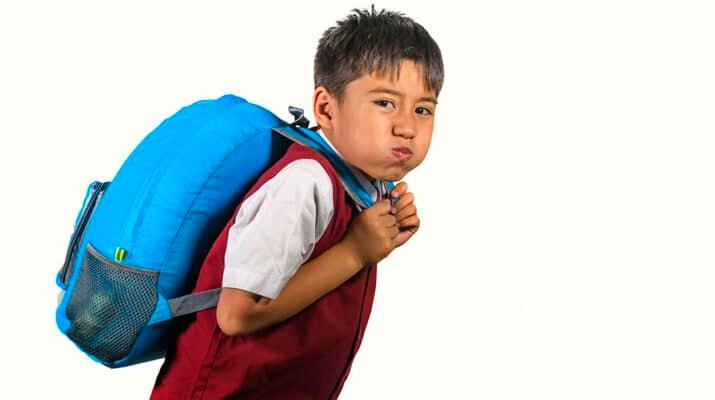Make sure your children’s packs don’t hurt their backs
By Deborah Jeanne Sergeant
Chronic low back pain is prevalent among youth, with 13% of adolescent boys and 26% of girls reporting this issue, according to the research cited by the National Spine Institute,
Most children and teens carry backpacks to school and doing so can have negative consequences on back health. Plan to protect your children’s backs from back injuries caused by backpacks.
“An overloaded or improperly fit backpack can cause growing children back problems,” said Garry Campbell, physical therapist and clinical director of Onondaga Physical Therapy. “A study led by Shelley Goodgold, physical therapist, found that 55% of children surveyed carried backpack loads heavier than the recommended 15% of their body weight.
“Also, one-third of the children reported back pain that led them to seek medical attention, miss school or abstain from physical activities.”
Campbell recommends looking for a backpack with two wide, padded straps; hip belts, which can transfer some of the burden to the hips and torso; padded lumbar support; and a pack that’s both lightweight and the correct size.
Drawstring bags will not offer the same support as a wide strapped bag. Get a bag that’s on the small side for younger children. It’s especially easy for them to overestimate how much weight they’re capable of carrying and to overfill a pack that’s too big.
Diane Oldenburg, associate public health educator for Oswego County Health Department, advises that children should wear a backpack that’s not wider than their torsos or hang more than four inches below the waist.
“Backpacks should rest in the curve of the lower spine,” she added. “Teach kids to use both straps that are adjusted to keep the load close to the body and above the pelvis. Waist or chest straps can help distribute the weight.”
Load the heaviest items first and in the center of the pack.
“If a student has to lean forward to support the weight of the backpack, it is too heavy,” Oldenburg said. “Students should not ignore back, shoulder or neck pain that could be related to carrying their backpack.”
How kids carry their backpacks also matters. Wearing just one shoulder strap makes it handier to access the bag, but incorrectly wearing a backpack can lead to pain. Oldenburg also encourages parents to help keep packs light going through their children’s bags with them occasionally to remove items no longer needed. Kids should also use their lockers to store items during the day as applicable.
“Use both shoulder straps; straps should fit snug and well fitting,” said Sherry Crisafulli, director of Special Children Services for Oswego County Health Department. “Put heavier items in the bottom of the backpack.”
Warning Signs that a Pack Is Too Heavy
• Change in posture when wearing pack.
• Struggling when putting on or taking off the pack.
• Pain when wearing the pack.
• Tingling, numbness, or red marks on the shoulders.
— Garry Campbell, physical therapist and clinical director of Onondaga Physical Therapy

